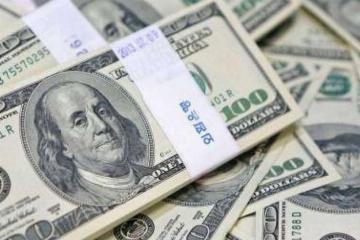The strength of the U.Sdollar has seen an impressive surge since last October, with the dollar index climbing approximately 7.46%. This phenomenon has stirred significant concerns, especially for emerging market economies like China, where the pressures of currency depreciation are palpableThe rise of the dollar is not merely a random fluctuation; rather, it reflects strategic maneuvers orchestrated by the U.SFederal Reserve to attract global capital amidst a backdrop of declining interest ratesThe implications of this trend are vast and can reshape the international financial landscape.
As the dollar grows stronger, the Chinese yuan has faced unprecedented challengesThe crucial question arises: how will China navigate this dollar-dominated environment, and can the People's Bank of China (PBOC) effectively intervene to restore equilibrium? The stakes of these decisions could determine future trajectories in global finance.
The Federal Reserve's Strategic Moves
Between last October and mid-January, the dollar's rise has not occurred in isolation; it has been underpinned by actions taken by the Federal Reserve
Advertisements
The rate cuts initiated by the Fed theoretically aimed to rejuvenate the stagnating U.Seconomy by reducing borrowing costsHowever, this policy inadvertently acted as a magnet, drawing significant capital flows into U.Smarkets and effectively bolstering the dollar’s dominance.
As the United States struggled with economic slowdowns, the Fed's strategy of rate reductions became increasingly central to rebalancing its financial ecosystemWith European and Japanese economies teetering in a state of languish, investors naturally pivoted their attention towards the American markets where they anticipated more favorable returns on investmentsThe consequence of this shift resulted in a depreciation of currencies like the yuan, as capital scarcity hit emerging markets hard.
A concerning aspect of the dollar's ascent is the burden it places on companies that have previously borrowed in dollars
Advertisements
As the dollar appreciates, these firms encounter increased debt obligations, which can lead to cascading financial pressures jeopardizing their operational viabilityFor enterprises in China, especially those with foreign currency debts, the repercussions are twofold: export costs inflate while profit margins dwindle, creating a perilous environment that could culminate in repayment crises.
Thus, it is evident that the powerful position of the dollar poses significant tests for not only Chinese planners but for global economic stability as a wholeThe intensity of market volatility that accompanies this terrain cannot be understated; as the dollar climbs, global capital increasingly seeks refuge in its embrace, which ignites fears of a broader backlash affecting diverse economies.
Central Bank's Countermeasures
Recognizing the perilous state of the yuan, the PBOC took decisive action as the dollar index threatened to breach critical thresholds
Advertisements
By issuing 600 billion yuan in central bank bills in the offshore Hong Kong market, the PBOC sought to stabilize the currency and restore confidence among investorsOn the surface, this maneuver may seem unremarkable, yet its orchestration demonstrated a clear willingness to intervene robustly during turbulent market periods.
The PBOC's tactical approach mirrors a strategy to tighten liquidity in the market, effectively reducing the supply of yuan in circulationThis scarcity induced a renewed demand for the currency, allowing for a stabilization in its exchange rateBy carefully calibrating market dynamics, the central bank exerted control over fluctuations, thereby reinforcing its commitment to the yuan's strength on the global stage.
While the measure successfully stilled the waters temporarily, it also raised eyebrows regarding its long-term viabilityCritics pointed out that the stabilization was underpinned by the depletion of foreign reserves, which leads to broader questions about the sustainability of such interventions
- Inflation in the Eurozone
- Inflation in Europe Will Rise Next Year
- The Importance of Gold Reserves
- Boosting Enterprise Innovation for New Productive Forces
- The Fed's Rate Cut Faces Uncertainty
However, with reserves amounting to 3.2 trillion dollars, the PBOC's scope for action remains substantialThis recent episode underscores the resilience of China's economy—its robustness to weather external upheaval reflects necessary adaptability to shifting financial tides.
The Complications Endured by the U.SEconomy
On a deeper analytical level, the challenges facing the U.Seconomy are equally profoundThe dollar's newfound strength is underscored by alarming national debt levels, which have ballooned to approximately 36 trillion dollars, a reality that complicates fiscal policy entirelyThe surge in government borrowing continues unabated, largely funding previous obligations and rising interest paymentsThis cycle of debt accumulation threatens to become a black hole, with governmental fiscal policy trapped in a quagmire that appears increasingly unsustainable.
Simultaneously, the U.S

economy is navigating a precarious balance between wild technological enthusiasm—especially within AI and military sectors—while grappling with the inevitability of economic corrections driven by debt levels and eventual financial market adjustmentsThe appearance of a booming economy is fraught with hidden pitfalls, indicating an over-reliance on superficial gains that may not withstand more rigorous financial scrutiny.
The Federal Reserve's rate cuts, initially viewed as mechanisms to stabilize, face skepticism as markets continue to reflect tumultuous shiftsThis indicates that the American financial apparatus has transitioned beyond traditional rate-driven incentives; it is now highly enmeshed in complex financial strategies aimed at sustaining a façade of economic health.
With global entities increasingly wary of the structural volatility tied to U.Smonetary policy, the stage is set for heightened capital flight
Countries like China must paraphrase their strategies; absent proactive policies to adapt to these shifting paradigms, they risk exacerbating their financial circumstances—a reality looming ever larger amid already competitive global markets.
Shifting Dynamics of Global Capital Flows
The new financial battleground is emerging rapidly; the battle for capital and influence will pit nations against each other, each maneuver carefully calculated to allure investments while safeguarding their own economic interestsThe U.Scontinues to assert its dominance with the dollar, effectively using its currency as both a weapon and a shield in its ceaseless pursuit of market controlIn this context, stability is a fragile concept, precariously perched atop a web of interdependencies and challenges.
In conclusion, as we navigate the complexities of the ongoing financial chess game, the immediate future promises to yield new challenges that transcend mere economic considerations